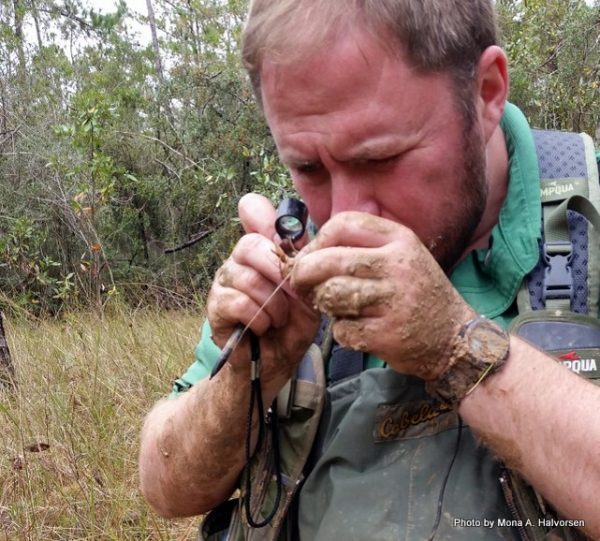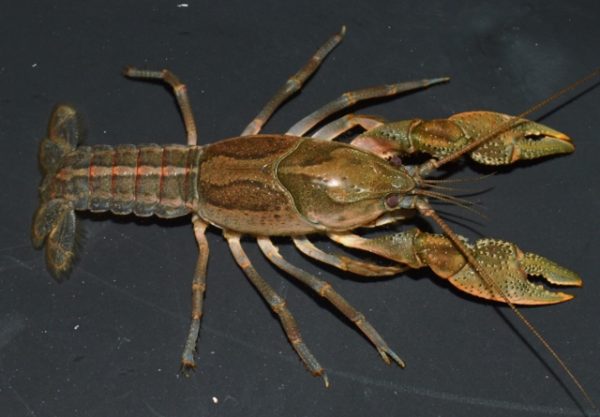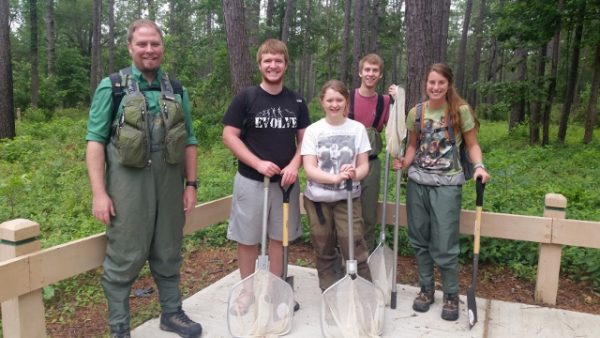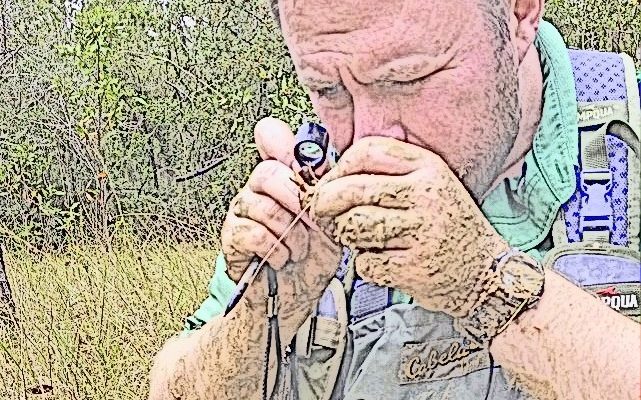If someone had told a 20-year-old Dr. Zachary Loughman that he would someday be studying crayfish and teaching biology at West Liberty University, he wouldn’t have believed them. Now though, it’s hard to believe that Loughman, who has spent the last 12 years earning widespread renown for his work in crayfish biology, has ever done anything else.
Among his accomplishments, Loughman has discovered and named five new crayfish species, earned the title of WV Professor of the Year in 2014, had numerous articles of his research published, and been featured in publications like, most recently, the Winter 2016 issue of West Virginia’s science magazine The Neuron. Since January, he’s snagged $250,000 in grants for his laboratory, he’s taking a sabbatical in the fall to be the leading author in a book on Appalachian crayfish, and he’s funded to do a full biotic inventory of crayfish habitats in all of western Pennsylvania over the next three years. His laboratory just finished a nearly two-year study at Big Thicket National Preserve in Texas, and his conservation work is leading to one crayfish species being placed on the national endangered species list soon. And those are just a few of the things Loughman’s West Liberty University-based crayfish conservation lab has going on!

Until Loughman was a master’s student at Marshall University, though, he was convinced he would be a snake biologist.
As an undergraduate student at West Liberty University, he filled the zoology lab with over 30 snakes and completed several successful snake field research projects. He went to Marshall University to study reptiles and amphibians under Dr. Thomas Pauley. “I was set, and I was 100% convinced that I was going to be doing some kind of research in a jungle, tracking some kind of tropical snake through a tropical rainforest, with a telemetry unit,” Loughman said. “I mean I had it all in my head.”
It was when he was working on his thesis, and trying unsuccessfully to track a snake species called the hognose snake, that Loughman said he “kind of ran face-first into the trials and tribulations of working with animals that are difficult to find.” At the same time, he said, the market for herpetologists—those who study reptiles like snakes—was becoming saturated, in part due to the rising popularity of reptile-studying TV personalities like Steve Irwin and Jeff Corwin.
Loughman acknowledges his faculty advisor, Dr. Pauley (whom he named his most recently discovered crayfish species, Cambarus pauleyi, in honor of), as the person who led him to study another animal besides snakes. He described one car ride in which Pauley said to him, “‘You know, I’ve seen you, and you just do not give up. You are out there, you’re killing yourself. You’re kind of still happy, and the reason why is every time you look down you see a spider, or a millipede, and you’re just kind of able to pick it up and it gives you your motivation back and then you go after the snake. So I hate to tell you this but I really think that for you it’s just chasing creepy crawlies, that’s what’s really driving you. Why don’t you pick a group that nobody studies?’”
That is when, Loughman says, he started “dabbling” in various invertebrate groups. He describes the less than 10-day period when he stocked his refrigerator with leeches—which Kathy, his new wife at the time, quickly put a stop to—and a phase when he collected centipedes. “I learned very quickly,” Loughman said, “that they’re kind of creepy and they’re difficult to ID, and there’s no ‘save the centipede campaign,’ so I knew it would be a cool group, but not lucrative from a job perspective.”
So how did the now esteemed crayfish biologist start studying crawdads?

One day, he was sitting in his laboratory at Marshall, and one of his lab mates brought in a five-pound bucket and plopped it onto the desk beside him. Loughman said she told him to figure out what they were and stormed out of the room. So Loughman had this mysterious bucket of unknown creatures he was supposed to identify. “I heard this scratching noise” coming from inside, Loughman said, “and so I popped open the bucket and peered down in and instantly all these little crayfish looked up at me, and I was like, crayfish?!” Not immediately impressed, still Loughman went to the trouble of getting a book from the library and identifying the animals.
Slowly, they grew on him. They were roughly the same size as the reptiles and amphibians he’d been trained to study. “Functionally it kind of acts like a vertebrate ecologically,” Loughman said, “so all the stuff I learned how to do with salamanders and snakes was directly applicable to a crawdad. But then I found nobody was doing that with crawdads.” Not only that, but the more he read, the more he realized that there was very little knowledge out there of crayfish, just the recurring word “endangered.” “They were quirky,” Loughman said, “they were a little bit aggressive—I like things that bite and pinch. So I went out and identified a couple more around Huntington, out in the creek. Then I went out and identified more and then I realized one day that I’m spending more time with these crayfish than I am with my herps, like there might actually be something.”
He gives his mentor Pauley all the credit for being the one to tell him, “‘This is it. This is what you need to do.’” Twelve years later, Loughman still agrees with him.
These days, his laboratory at West Liberty focuses on three facets of crayfish conservation: survey work, where they actually go out into the field and collect the animals and data; taxonomy and systematics, where they get to name and describe new species; and Loughman’s favorite, crayfish natural history. “When you’re studying the natural history of an animal,” Loughman said, “you are studying the who, what, when, where why of it. So for the who—who does it eat, who eats it, who is the crayfish’s competition, when does it breed, when does it not breed, so all these kind of straightforward, very simple applied questions just aren’t known about these animals.”

All three facets of his research combined develop into their overall mission of crayfish conservation. “The goal is to preserve an animal that is worthy of preservation in the manner that still supports economic development, which is totally possible,” Loughman said.
Overall, Loughman credits many others for his accomplishments besides just himself—his students, his mentors, his colleagues, his family. He talks of his wife, Kathy, who goes on some of his trips with him and is very tolerant of having crayfish living in their refrigerator most days. One of his favorite moments from his research occurred, he said, when he was about to name his first new crayfish species. “It’s a tradition in taxonomy,” he said, “that you list all the people that were present when you collected the type species.” So for his first one, he brought his wife and his son, Collin, who was about 1 ½ years old at the time, up the west fork of the Greenbrier River. So his wife’s and son’s names are listed in the paper alongside his. He describes the overwhelming emotions that hit him that day: “It was kind of like, holy, Lord, I am coming up here to collect an animal that I am going to name, that until I name it, it doesn’t exist scientifically, and I’ve got my family here, and we’re up in the mountains.”
He also says he couldn’t do any of this without his students. “My favorite bit is when we go to meetings all over the eastern United States,” he said, “and we have some Ph.D. or graduate student come up to one of the West Liberty students at a poster and they start talking to them and then that always kind of segues into, ‘Well where are you getting your Ph.D.?’ And then my students are like, ‘Oh, I’m just an undergrad.’ And the people almost always invariably try to find me and they’re like, ‘What are you doing? How are they this good?!’ And so that’s not on me, that’s on the culture of our degree in biology here. So we’re obviously doing things right, and I just like keeping that alive. That, to me, is worth everything.”
(Photos provided by Dr. Zachary Loughman)




